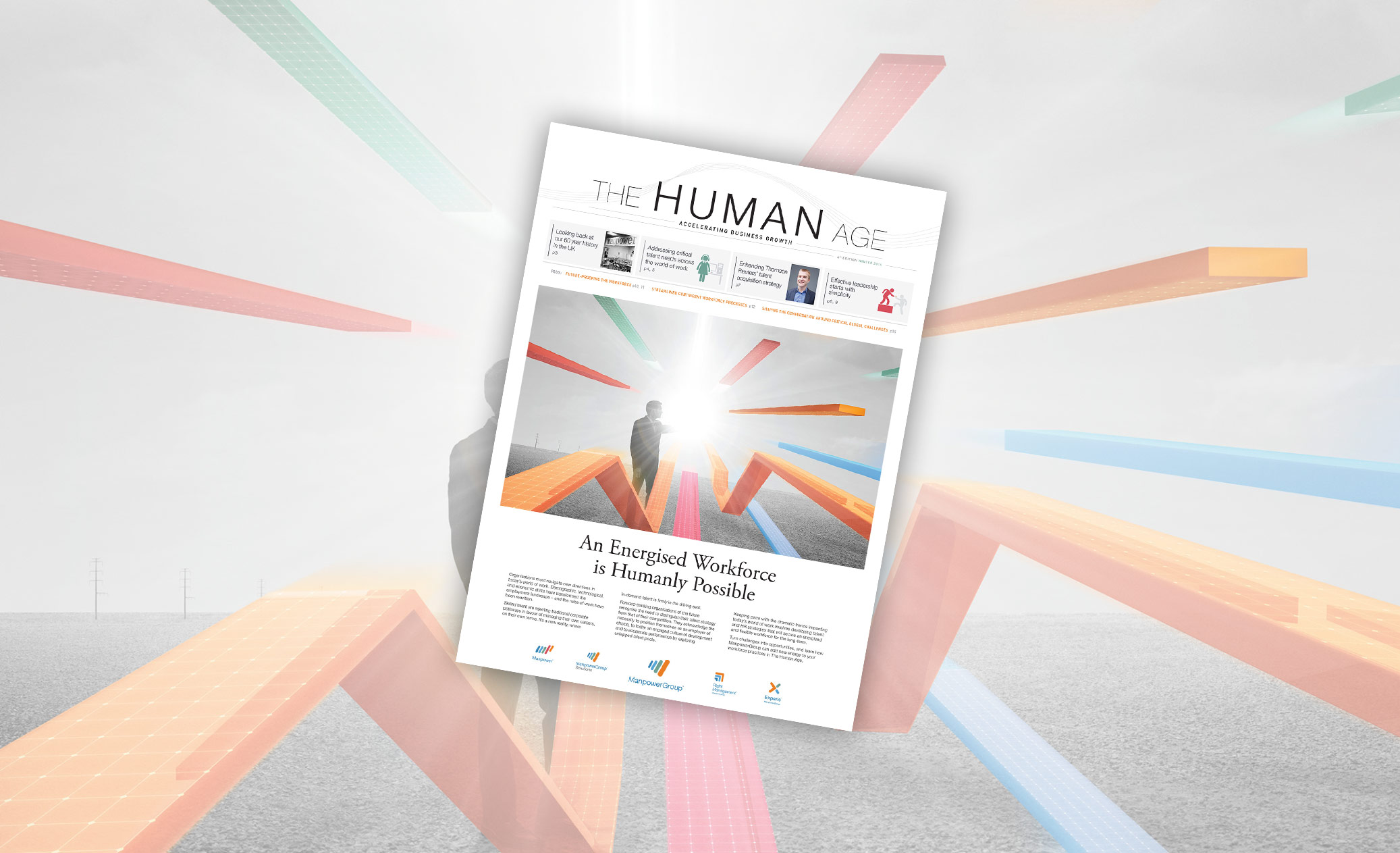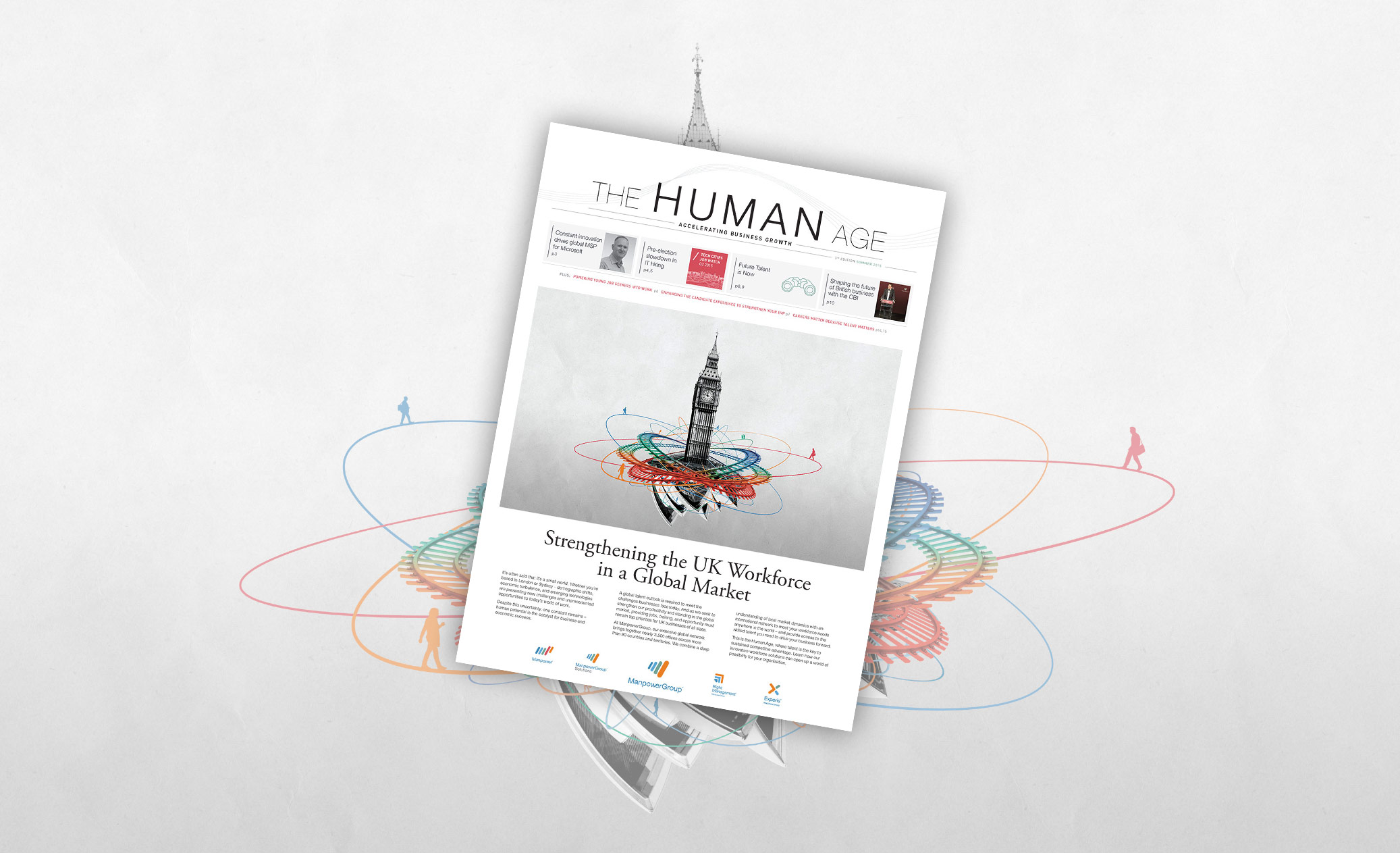Organisations must navigate new directions in today’s world of work. Demographic, technological, and economic shifts have transformed the employment landscape – and the rules of the work have been rewritten. Skilled talent are rejecting traditional corporate pathways in favour of managing their own careers, on their own terms. It’s a new reality, where in-demand talent is firmly in the driving seat.
Continue readingHuman Age 2.0: Future Forces at Work
A perfect storm of structural and cyclical forces – from shifting demographics to rapid globalisation and technological revolutions – coupled with a highly uncertain business environment, is knocking labour markets out of sync. The result? High unemployment alongside unfilled jobs, rising productivity with stagnant wages, and economic recovery with declining upward mobility for many. The skills of the workforce are out of pace with business needs.
Continue readingManpower Employment Outlook Survey – Q1 2016
The Manpower Employment Outlook Survey for Q1 2016 was conducted by interviewing a representative sample of 2,102 employers in the UK. All survey participants were asked, “How do you anticipate total employment at your location to change in the three months to the end of March 2016 as compared to the current quarter?”
Continue readingContingent Workforce Index – September 2015
The Contingent Workforce Index (CWI) measures the relative ease of sourcing, hiring and retaining a contingent workforce in competing labour markets around the world. It compiles more than 50 key data points around the Availability, Cost Efficiency, Regulation and Productivity of each country’s contingent workforce, and uses this to compare the relative opportunities of entering one labour market versus another.
Continue readingManpower Employment Outlook Survey – Q4 2015
The Manpower Employment Outlook Survey for Q4 2015 was conducted by interviewing a representative sample of 2,101 employers in the UK. All survey participants were asked, “How do you anticipate total employment at your location to changein the three months to the end of December 2015 as compared to the current quarter?”
Continue readingThe Human Age Newspaper – Third Edition
It’s often said that it’s a small world. Whether you’re based in London or Sydney – demographic shifts, economic turbulence, and emerging technologies are presenting new challenges and unprecedented opportunities to today’s world of work. Despite this uncertainty, one constant remains – human potential is the catalyst for business and economic success.
Continue readingManpower Employment Outlook Survey – Q3 2015
The Manpower Employment Outlook Survey for Q3 2015 was conducted by interviewing a representative sample of 2,100 employers in the UK. All survey participants were asked, “How do you anticipate total employment at your location to change in the three months to the end of September 2015 as compared to the current quarter?”
Continue reading2015 Global Talent Shortage Survey
It’s ten years since our first Talent Shortage Survey, and a great deal has changed. The world has experienced a global recession, an uneven recovery, and demographic, technological and economic shifts that have transformed the employment landscape. We have seen the emergence of the Human Age, where talent is the new differentiator.
Continue reading#TRUST: Key For Great Employer Brands – March 2015
Today’s employers recognise the value of their employer brand to attract top talent, engage employees and establish a reputation as an employer of choice. Companies are increasing investments in strategies to enhance their employer value proposition (EVP) and extend awareness of their EVP to employees and potential candidates.
Continue readingManpower Employment Outlook Survey – Q2 2015
The Manpower Employment Outlook Survey for Q2 2015 was conducted by interviewing a representative sample of 2,100 employers in the UK. All survey participants were asked, “How do you anticipate total employment at your location to change in the three months to the end of June 2015 as compared to the current quarter?”
Continue reading
